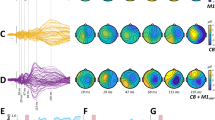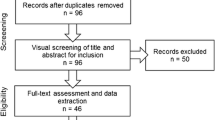Abstract
Cerebellar brain inhibition (CBI) describes the inhibitory tone the cerebellum exerts on the primary motor cortex (M1). CBI can be indexed via a dual-coil transcranial magnetic stimulation protocol, whereby a conditioning stimulus (CS) is delivered to the cerebellum in advance of a test stimulus (TS) to M1. The CS is typically delivered at intensities over 60% maximum stimulus output (MSO) via a double-cone coil. This is reportedly uncomfortable for participants, reducing the reliability and validity of outcomes. This feasibility study investigates the reliability and tolerability of eliciting CBI across a range of CS intensities using both a double-cone and high-powered figure-of-8 coil, the D702. It was expected that the double-cone coil would elicit CBI at intensities upwards of 60%MSO. The range for the D702 coil was exploratory. The double-cone coil was expected to be less tolerable than the D702 coil. CBI was assessed in 13 participants (25.92 ± 5.42 years, six female) using each coil (randomized) over intensities 40, 50, 60, 70, 80%MSO. Tolerability was assessed via visual analog scales. Comparisons across intensities and tolerability were assessed non-parametrically and via a linear model. The double-cone coil elicited CBI at intensities 60, 70, and 80%MSO (p < .05), with suppression elicited at 60%MSO not significantly different to that at higher intensities. CBI was not reliably elicited by the D702 coil at any intensity. The double-cone coil was significantly less tolerable than the D702. A CS of 60%MSO with a double-cone coil provides a balance between the reliability and tolerability of CBI.






Similar content being viewed by others
References
Ito M. Cerebellar circuitry as a neuronal machine. Progress Neurobiol. 2006;78(3-5):272–303.
Ito M. Cerebellar long-term depression: characterization, signal transduction, and functional roles. Physiol Rev. 2001;81(3):1143–95.
Stoodley CJ, Schmahmann JD. Functional topography in the human cerebellum: a meta-analysis of neuroimaging studies. NeuroImage. 2009;44(2):489–501.
Dum RP, Strick PL. An unfolded map of the cerebellar dentate nucleus and its projections to the cerebral cortex. J Neurophysiol. 2003;89:634–9.
Manto M, Bower JM, Conforto AB, Delgado-Garcia JM, da Guarda SN, Gerwig M, et al. Consensus paper: roles of the cerebellum in motor control--the diversity of ideas on cerebellar involvement in movement. Cerebellum. 2012;11(2):457–87.
Medina JF, Lisberger SG. Links from complex spikes to local plasticity and motor learning in the cerebellum of awake-behaving monkeys. Nat Neurosci. 2008;11(10):1185–92.
Yanagihara D, Kondo I. Nitric oxide plays a key role in adaptive control of locomotion in a cat. Proceed Nat Acad Sci United States of Am. 1996;93:13292–7.
Jayaram G, Galea JM, Bastian AJ, Celnik P. Human locomotor adaptive learning is proportional to depression of cerebellar excitability. Cerebral cortex (New York NY : 1991). 2011;21(8):1901–9.
Grimaldi G, Argyropoulos GP, Boehringer A, Celnik P, Edwards MJ, Ferrucci R, et al. Non-invasive cerebellar stimulation--a consensus paper. Cerebellum. 2014;13(1):121–38.
Daskalakis ZJ, Paradiso GO, Christensen BK, Fitzgerald PB, Gunraj C, Chen R. Exploring the connectivity between the cerebellum and motor cortex in humans. J Physiol. 2004;557(Pt 2):689–700.
Ugawa Y, Uesaka Y, Terao Y, Hanajima R, Kanazawa I. Magnetic stimulation over the cerebellum in humans. Ann Neurol. 1995;37(6):703–13.
Baarbé J, Yielder P, Daligadu J, Behbahani H, Haavik H, Murphy B. A novel protocol to investigate motor training-induced plasticity and sensorimotor integration in the cerebellum and motor cortex. J Neurophysiol. 2014;111(4):715–21.
Hardwick RM, Lesage E, Miall RC. Cerebellar transcranial magnetic stimulation: the role of coil geometry and tissue depth. Brain Stimul. 2014;7(5):643–9.
Fernandez L, Major BP, Teo WP, Byrne LK, Enticott PG. Assessing cerebellar brain inhibition (CBI) via transcranial magnetic stimulation (TMS): A systematic review. Neurosci Biobehav Rev. 2017.
Sauvé WM, Crowther LJ. The Science of Transcranial Magnetic Stimulation. Psychiatric Annals. 2014;44(6):279–83.
Wassermann EM, Epstein CM, Ziemann U, Walsh V, Paus T, Lisanby SH, editors. Oxford Handbook of Transcranial Stimulation. 1ed ed. New York: Oxford University Press; 2008.
Deng ZD, Lisanby SH, Peterchev AV. Electric field depth-focality tradeoff in transcranial magnetic stimulation: simulation comparison of 50 coil designs. Brain stimulation. 2013;6(1):1–13.
Deng ZD, Lisanby SH, Peterchev AV. Coil considerations for deep transcranial magnetic stimulation. Clin Neurophysiol. 2014;125(6):1202–12.
Na J, Kakei S, Shinoda Y. Cerebellar input to corticothalamic neurons in layers V and VI in the motor cortex. Neurosci Res. 1997;28(1):77–91.
Shinoda Y, Kakei S, Futami T, Wannier T. Thalamocortical organization in the cerebello-thalamo-cortical system. Cerebral cortex. 1993;3:421–9.
Fisher KM, Lai HM, Baker MR, Baker SN. Corticospinal activation confounds cerebellar effects of posterior fossa stimuli. Clin Neurophysiol : Off J Int Fed Clin Neurophysiol. 2009;120(12):2109–13.
Ugawa Y, Yoshikazu U, Terao Y, Hanajima R, Kanazawa I. Magnetic stimulation of corticospinal pathways at the foramen magnum level in humans. Ann Neurol. 1991;36(4):618–24.
Ugawa Y. Can we see the cerebellar activation effect by TMS over the back of the head? Clin Neurophysiol : Off J Int Fed Clin Neurophysiol. 2009;120(12):2006–7.
Daskalakis ZJ, Christensen BK, Fitzgerald PB, Fountain SI, Chen R. Reduced cerebellar inhibition in schizophrenia: A preliminary study. Am J Psychiatry. 2005;162(6):1203–5.
Galea JM, Jayaram G, Ajagbe L, Celnik P. Modulation of cerebellar excitability by polarity-specific noninvasive direct current stimulation. J Neurosci : Off J Soc Neurosci. 2009;29(28):9115–22.
Kassavetis P, Hoffland BS, Saifee TA, Bhatia KP, Van De Warrenburg BP, Rothwell JC, et al. Cerebellar brain inhibition is decreased in active and surround muscles at the onset of voluntary movement. Exp Brain Res. 2011;209(3):437–42.
Lu MK, Tsai CH, Ziemann U. Cerebellum to motor cortex paired associative stimulation induces bidirectional STDP-like plasticity in human motor cortex. Frontiers in human neuroscience. 2012(SEPTEMBER).
Ni Z, Pinto AD, Lang AE, Chen R. Involvement of the cerebellothalamocortical pathway in Parkinson disease. Ann Neurol. 2010;68(6):816–24.
Pinto AD, Chen R. Suppression of the motor cortex by magnetic stimulation of the cerebellum. Exp Brain Res. 2001;140(4):505–10.
Schlerf GJM, Bastian AJ, Celnik PA. Dynamic modulation of cerebellar excitability for abrupt, but not gradual, visuomotor adaptation. J Neurosci : Off J Soc Neurosci. 2012;32(34):11610–7.
Shirota Y, Hamada M, Hanajima R, Terao Y, Matsumoto H, Ohminami S, et al. Cerebellar dysfunction in progressive supranuclear palsy: A transcranial magnetic stimulation study. Movement Disorders. 2010;25(14):2413–9.
Spampinato D, Block HJ, Celnik PA. Cerebellar-M1 Connectivity Changes Associated with Motor Learning Are Somatotopic Specific. J Neurosci : Off J Soc Neurosci. 2017;37(9):2377–86.
McNeil CJ, Butler JE, Taylor JL, Gandevia SC. Testing the excitability of human motoneurons. Front Human Neurosci. 2013;7:152.
Taylor JL, Gandevia SC. Noninvasive stimulation of the human corticospinal tract. J Appl Physiol. 2004;96:1496–503.
Panyakaew P, Cho HJ, Srivanitchapoom P, Popa T, Wu T, Hallett M. Cerebellar brain inhibition in the target and surround muscles during voluntary tonic activation. Eur J Neurosci. 2016;
Schlerf JE, Galea JM, Spampinato D, Celnik PA. Laterality Differences in Cerebellar-Motor Cortex Connectivity. Cerebral cortex. 2015;25(7):1827–34.
Werhahn KJ, Taylor J, Ridding M, Meyer BU, Rothwell JC. Effect of transcranial magnetic stimulation over the cerebellum on the excitability of human motor cortex. Electroencephalogr Clin Neurophysiol Electromyogr Motor Control. 1996;101(1):58–66.
Carrillo F, Palomar FJ, Conde V, Diaz-Corrales FJ, Porcacchia P, Fernandez-Del-Olmo M, et al. Study of cerebello-thalamocortical pathway by transcranial magnetic stimulation in Parkinson's disease. Brain Stimul. 2013;6(4):582–9.
Torriero S, Oliveri M, Koch G, Lo Gerfo E, Salerno S, Ferlazzo F, et al. Changes in cerebello-motor connectivity during procedural learning by actual execution and observation. J Cogn Neurosci. 2011;23(2):338–48.
Krienen FM, Buckner RL. Segregated fronto-cerebellar circuits revealed by intrinsic functional connectivity. Cerebral cortex. 2009;19(10):2485–97.
Oldfield RC. The assessment and analysis of handedness: the Edinburgh inventory. Neuropsychol. 1971;9:97–113.
Martin PG, Hudson AL, Gandevia SC, Taylor JL. Reproducible measurement of human motoneuron excitability with magnetic stimulation of the corticospinal tract. J Neurophysiol. 2009;102(1):606–13.
Field A, Miles J, Field Z. Discovering Statistics Using R: SAGE Publications Ltd; 2012.
Stokes MG, Barker AT, Dervinis M, Verbruggen F, Maizey L, Adams RC, et al. Biophysical determinants of transcranial magnetic stimulation: effects of excitability and depth of targeted area. J Neurophysiol. 2013;109(2):437–44.
Torriero S, Oliveri M, Koch G, Lo Gerfo E, Salerno S, Ferlazzo F, et al. Changes in cerebello-motor connectivity during procedural learning by acutal execution and observation. J Cogn Neurosci. 2011;23(2):338–48.
Popa T, Russo M, Meunier S. Long-lasting inhibition of cerebellar output. Brain Stimul. 2010;3(3):161–9.
Do M, Byrne LK, Pearce AJ. Examining the feasibility and tolerability of a clinically informed multisite, repetitive transcranial magnetic stimulation protocol. J Neurosci Methods. 2016;258:24–7.
Mutanen T, Maki H, Ilmoniemi RJ. The effect of stimulus parameters on TMS-EEG muscle artifacts. Brain stimul. 2013;6(3):371–6.
Acknowledgements
PGE is funded by a Future Fellowship from the Australian Research Council (FT160100077).
Author information
Authors and Affiliations
Corresponding author
Ethics declarations
Ethical approval was granted by the Deakin University Human Research Ethics Committee.
ᅟ
Conflicts of Interest
The authors declare that they have no conflicts of interest.
Ethical Approval
All procedures performed in studies involving human participants were in accordance with the ethical standards of the institutional and/or national research committee and with the 1964 Helsinki declaration and its later amendments or comparable ethical standards.
Informed Consent
Informed consent was obtained from all individual participants included in the study.
Rights and permissions
About this article
Cite this article
Fernandez, L., Major, B.P., Teo, WP. et al. The Impact of Stimulation Intensity and Coil Type on Reliability and Tolerability of Cerebellar Brain Inhibition (CBI) via Dual-Coil TMS. Cerebellum 17, 540–549 (2018). https://doi.org/10.1007/s12311-018-0942-5
Published:
Issue Date:
DOI: https://doi.org/10.1007/s12311-018-0942-5




